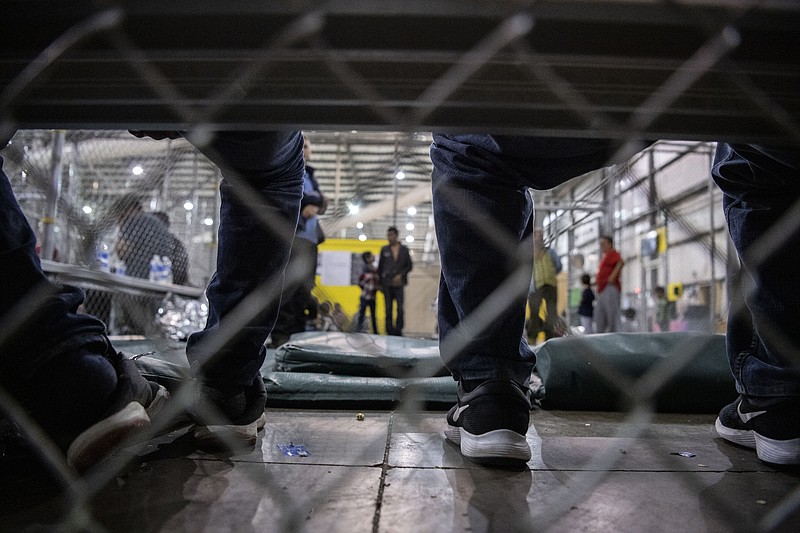WASHINGTON -- U.S. Customs and Border Protection officials have shut down the south Texas warehouse where chain-link enclosures were deplored as "cages" during the Trump administration's crackdown on migrant families and children. The facility will undergo renovations until 2022, immigration officials said.
The chain-link partitions will be removed, and the warehouse will be redesigned to provide detained migrants with more humane conditions, officials said. The renovations will take 18 months or longer, leaving border agents without a large-volume facility if a new migration surge occurs next year.
"The new design will allow for updated accommodations, which will greatly improve the operating efficiency of the center, as well as the welfare of individuals being processed," said Thomas Gresback, a spokesman for the Border Patrol's Rio Grande Valley sector.
The Obama administration opened the facility in 2014 after a record number of Central American families and children began streaming into south Texas, leaving U.S. agents and border stations overcrowded. Customs and Border Protection obtained a large warehouse and hastily converted it into a clean, air-conditioned processing center to accommodate the surge. Inexpensive chain-link fencing was used to create partitions in the cavernous space, but its grim appearance came to symbolize the dehumanizing treatment of migrants in U.S. custody.
The warehouse has been mostly empty this year, as Customs and Border Protection implemented emergency public health measures in March that allow agents to quickly "expel" more than 90% of border crossers back to Mexico. Last week, a federal judge ordered the Trump administration to halt the practice of expelling underage migrants.
During pre-pandemic times, migrant families and children who were taken into custody in the Rio Grande Valley after crossing illegally into the United States typically were taken to the warehouse. Their personal and biometric information was recorded into government databases, and they would sometimes spend several days or more inside the facility, sleeping on mats as they waited for authorities to determine whether they would be transferred to a longer-term detention facility, returned to Mexico or released into the United States.
The partitions were used to separate different demographic groups -- such as keeping teenage boys apart from mothers with infants. The renovation is likely to replace the chain link with clear plastic dividers, and officials said the new facility will provide more recreation and play areas for children, as well as more permanent kitchen, infirmary and shower facilities.
The facility's capacity will be reduced from 1,500 to 1,100, Gresback said.
Department of Homeland Security officials and migration experts have warned that the incoming Biden administration risks facing a new migration crisis next year. Mexico and Central America have been battered by the economic squeeze of the coronavirus pandemic, and from catastrophic flooding and crop damage this fall after multiple hurricanes.
Last month, the number of migrants taken into custody along the Mexico border jumped to 69,237, up 21% from September. It was the highest one-month total since February 2019.
President-elect Joe Biden's campaign promises to reverse the Trump administration's restrictive approach to immigration enforcement have raised fears that smuggling organizations will use the anticipation of weaker enforcement to recruit clients.
The Rio Grande Valley remains the busiest area for illegal migration along the U.S. southern border, but the bare-bones detention cells of its Border Patrol stations were designed to hold adults, not families and children. Those stations became so crowded during the 2014 surge that families were left for hours in the sweltering exterior garages of the stations, in conditions so poor that the Obama administration was forced to look for an indoor, climate-controlled facility, settling on the warehouse.
When the families and children began crossing the border in large numbers again in 2018, the Trump administration responded with a zero-tolerance crackdown that intentionally separated thousands of migrant children from their parents. The children were sent to shelter facilities and dormitories that the Department of Health and Human Services oversaw, while the adults were kept in immigration jails.



